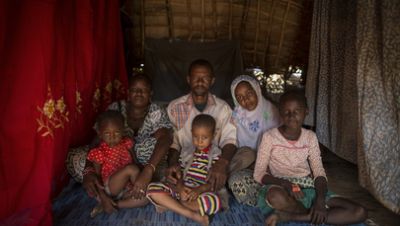Sabina Alkire is the Director of OPHI and Selim Jahan is the Director of HDRO, UNDP
Poverty is multidimensional and goes beyond income deprivations.
The measurement of multidimensional poverty serves as a complement to traditional income poverty measures, and focuses on the lived experiences of the poor — the many overlapping dimensions in which they face disadvantages. The relevance of such measurement is acknowledged in the preamble to the 2030 Agenda for Sustainable Development, which states that “eradicating poverty in all its forms and dimensions… is the greatest global challenge and an indispensable requirement for sustainable development.”
In order to compute multidimensional poverty at the global level, the global Multidimensional Poverty Index (MPI) was first developed jointly by the United Nations Development Program (UNDP) and the Oxford Poverty and Human Development Initiative (OPHI) for the 20th Anniversary of the Human Development Report (HDR) in 2010. For the HDR, OPHI calculated the global MPI covering 104 countries. The index represents an internationally comparable measure of acute poverty that captures the multiple deprivations poor people experience with respect to health, education, and living standards.
Methodologically, the global MPI uses the Alkire-Foster Method of multidimensional poverty measurement, a counting-based approach that builds individual deprivation profiles to analyze both the proportion of poor people in a given country and the intensity of their poverty. This method allows the index to be disaggregated by sub-groups (e.g., by subnational regions, by urban vs. rural populations or by age) to show the types of deprivations that are contributing to poverty within different populations, and to monitor changes in deprivations over time. Compiling this data into an aggregate index, such as the global MPI, creates a comprehensive picture of poverty for each individual and enables the analysis of the interlinked deprivations they experience.
The global MPI is composed of ten indicators distributed across three dimensions: health, education, and living standards. The ten weighted indicators are: nutrition, child mortality, years of schooling, school attendance, cooking fuel, improved sanitation, safe drinking water, electricity, flooring, and assets. These were chosen following a thorough consultation process with experts in each sector, as well as statistical validation and analysis of available data.
The global MPI, as the appropriate measure for multiple overlapping deprivations, has been endorsed by several specialists, among them the late Sir Tony Atkinson, who was a pivotal advisor to both the Human Development Report Office (HDRO) at UNDP and to OPHI. Led by Sir Tony, the World Bank’s 2016 Monitoring Global Poverty Report recommended the adoption of a measure that ideally would cover six dimensions: work, violence, health, nutrition, education, and living standards. Following the Atkinson Commission Report, (p170), here too, “It is not proposed that the [global MPI] should include a monetary poverty dimension. (...) The aim (...) is to provide indicators that complement the monetary indicator, and not to seek to combine the two different approaches.”
In recent years, some differences in computations led HDRO and OPHI to calculate separate measures. The most recent OPHI update of the global MPI in winter 2017-2018 was calculated for 104 countries. The most recent UNDP Human Development Report in 2016 calculated the global MPI for 102 countries. Both measures have produced similar results at the national level.
In early 2018, HDRO and OPHI agreed to adjust and unify their methodologies on poverty measurement in order to better monitor the Sustainable Development Goals (SDGs). The recent agreement to unify the measure settles those differences. The two institutions will calculate a joint global Multidimensional Poverty Index which will cover over 100 developing countries for the new generation of HDRs.
HDRO and OPHI are now discussing the technical details of the joint measure, to be constructed primarily from Demographic and Health Surveys (DHS) and Multiple Indicator Cluster Surveys (MICS), as well as National Surveys. These decisions will be validated both conceptually and statistically, following consultations with experts. The joint HDRO-OPHI measure is expected to be released in due course.
Also available in Spanish here.
The HDialogue blog is a platform for debate and discussion. Posts reflect the views of respective authors in their individual capacities and not the views of UNDP/HDRO.
HDRO encourages reflections on the HDialogue contributions. The office posts comments that supports a constructive dialogue on policy options for advancing human development and are formulated respectful of other, potentially differing views. The office reserves the right to contain contributions that appear divisive.
Photo: UN Photo / Tobin Jones


